Can You Take Pocket Knives on a Plane?
- January 29, 2024
- 0 comment
When preparing for air travel, many passengers wonder about the rules and regulations regarding carrying pocket knives on a plane. The issue of whether or not pocket knives are allowed on airplanes is a common source of confusion for travelers. In this article, we will explore the guidelines set by aviation authorities and provide clarity on this important matter.
Understanding Transportation Security Administration (TSA) Regulations
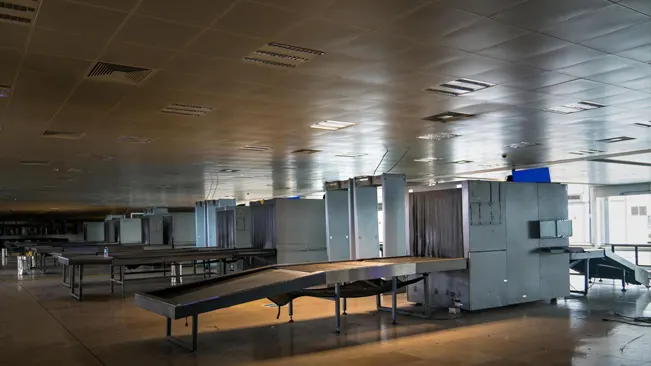
The Transportation Security Administration (TSA) is the authority that sets the guidelines for what is permissible on planes. According to the TSA, pocket knives are not allowed in carry-on bags but can be transported in checked baggage. The TSA’s policy on sharp objects states that any knife, except for plastic or round-bladed butter knives, must be in checked luggage.
WHAT TYPES OF KNIVES AROUND ALLOWED ON A PLANE?
| Type of Knife | Description | Allowed in Carry-On | Allowed in Checked Baggage |
| Non-locking Pocket Knives | Blades no longer than 2.36 inches, must be securely wrapped or in a case, allowed only in checked baggage. | No | Yes (With Conditions) |
| Plastic or Round-Bladed Butter Knives | Generally allowed in carry-on and checked baggage. | Yes (Generally) | Yes |
| Other Types of Knives | Strictly prohibited in carry-on, may be allowed in checked baggage with proper packing and depending on country’s regulations. | No | Yes (With Conditions) |
Which Knives Can You Bring on a Plane?
When considering which knives you can bring on a plane, it’s essential to understand the specific regulations set by the TSA or the corresponding authority in your destination country. Generally, non-locking pocket knives with blades no longer than 2.36 inches are permitted, but only in checked baggage and they must be securely wrapped or placed in a protective case.
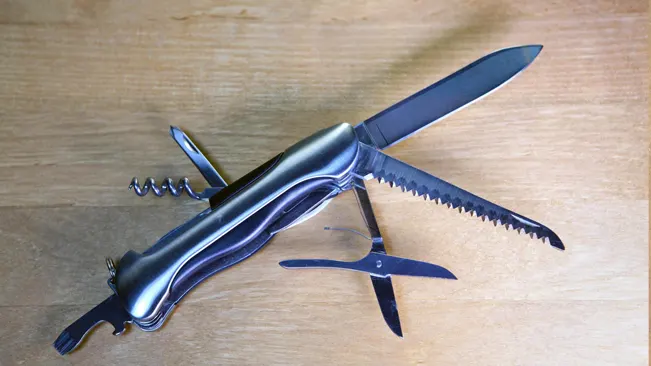
On the other hand, plastic or round-bladed butter knives are typically allowed in both carry-on and checked luggage. However, most other types of knives are strictly prohibited in carry-on bags and may only be transported in checked luggage under certain conditions, ensuring they are properly packed to avoid accidents. Always double-check the latest guidelines before traveling to ensure compliance and a smooth journey.
Types of Knives Allowed in Checked Luggage
If you’re a traveler with a penchant for outdoor pursuits like camping or hunting, you might consider packing a knife for your adventures. While it’s a no-go for carry-on bags, certain types of knives are acceptable in checked luggage.
- Fixed Blade Knives: Known for their sturdy design with a blade firmly fixed to the handle, these knives are acceptable in checked luggage provided the blade is 7 inches or shorter. Their multifunctional nature, useful in activities ranging from camping and hunting to fishing, makes them more of a tool than a threat.
- Kitchen Knives: Indispensable in culinary settings, from home kitchens to professional chef stations, these knives are generally not viewed as security hazards. Nonetheless, types with specialized blades like serrated or curved ones might face additional checks by certain airlines or in specific destinations.

- Pocket Knives: Often employed for a range of outdoor activities such as camping, fishing, and even routine tasks like opening boxes or snipping threads, pocket knives are seen as practical tools rather than security risks, making them suitable for checked luggage.
- Folding Knives: Characterized by blades that neatly fold into the handle, these knives are permissible in checked baggage as long as the blade does not exceed 4 inches in length.
- Multi-tools: These versatile gadgets often include a knife among their many features and are allowed in checked luggage, provided the knife component does not surpass 2.36 inches in length.
It’s important to note that any knife with a blade length exceeding the mentioned limits is strictly forbidden in checked luggage. Moreover, knives perceived as weapons, such as switchblades or daggers, are completely off-limits in both carry-on and checked luggage. Always verify the latest airline and destination-specific regulations to ensure your travel goes smoothly.
Types Of Knives Prohibited On Planes
Bringing such knives in your checked luggage could lead to a troubling encounter with airport security, potentially involving legal ramifications.
Knife regulations are complex and can differ significantly across various nations. However, a consensus exists among many authorities regarding the prohibition of certain types of knives, typically due to their potential as weapons.
Here is a list of knives commonly banned on airplanes:
Switchblades
Recognized by their spring-loaded blades that pop open at the press of a button, switchblades are not allowed on planes. They are seen as dangerous due to their easy concealment and quick deployment.
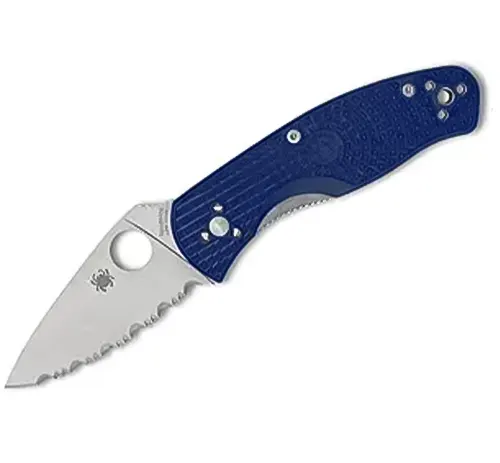
Balisongs or Butterfly Knives
These knives feature a blade that pivots out from the handle. They are prohibited on planes, often classified as a security risk due to their swift opening mechanism.
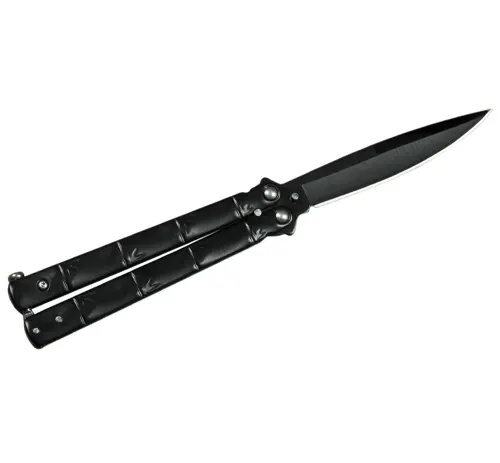
Disguised Knives
Crafted to appear as everyday items like pens or belt buckles, these covert knives are banned because they can be secretly carried on board and used to cause harm.
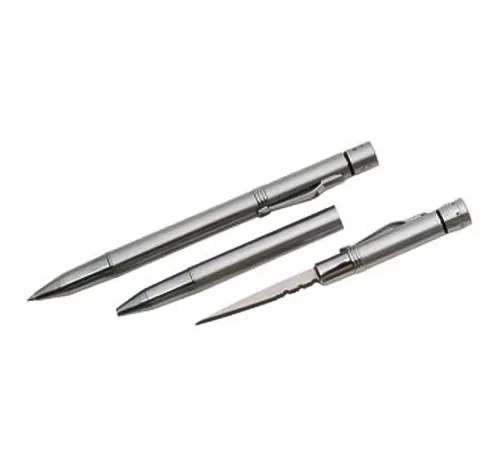
Throwing Stars or Ninja Stars
As weapons designed for throwing, these are not permitted on planes, primarily due to their potential to injure
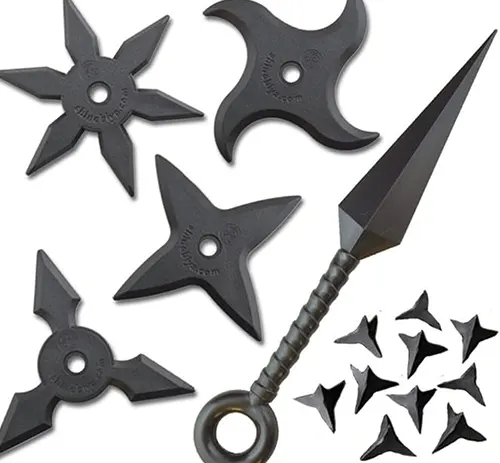
Straight Razors
With their fixed and elongated sharp blades, straight razors are seen as potential weapons and are thus not allowed.
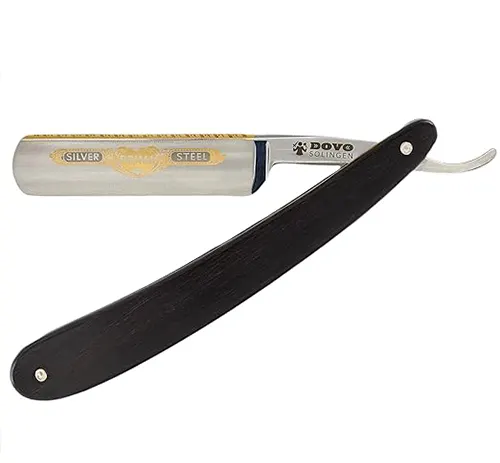
Swords or Sabres
The carriage of sharp-edged weapons, including swords and sabres, is generally prohibited by most countries, reflecting their potential danger in a public setting.
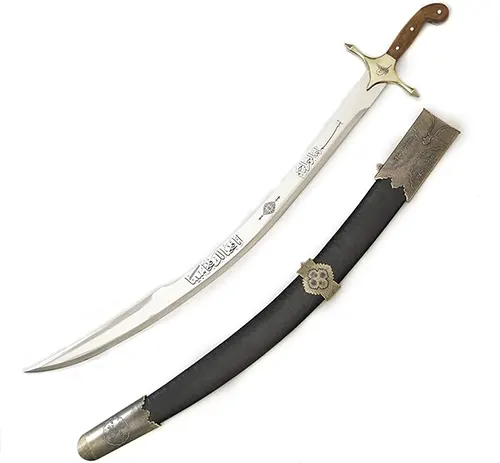
Carrying any of these items during air travel could lead to serious legal consequences. It’s always best to familiarize yourself with the specific regulations of the airline and the laws of the departing and destination countries to ensure a hassle-free journey.
Pocket Knives and TSA Regulations
The Transportation Security Administration (TSA) strictly prohibits passengers from carrying pocket knives and other similar sharp objects in their carry-on luggage due to security concerns. This policy includes pocket knives with blades that lock into place, as these are considered potential threats in the confined space of an aircraft cabin.
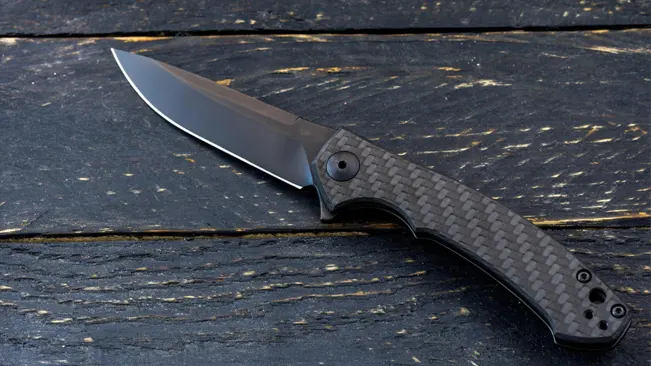
The TSA’s regulations are designed to mitigate risks and ensure the safety of all passengers and crew during flight. While these items are not permitted in carry-on bags, they can be packed in checked luggage, provided they are properly sheathed or securely wrapped to prevent injury to baggage handlers and inspectors. Travelers must be aware of and comply with these regulations to avoid delays and ensure a smooth security check process at the airport.
Permitted Knives
When you’re packing for a flight and want to take a knife with you, it’s really important to know what’s allowed. The TSA says it’s okay to put some kinds of knives in your checked bags (the ones that go in the plane’s cargo hold). But there are specific rules about this. You can pack non-locking pocket knives if their blades are no longer than 2.36 inches.
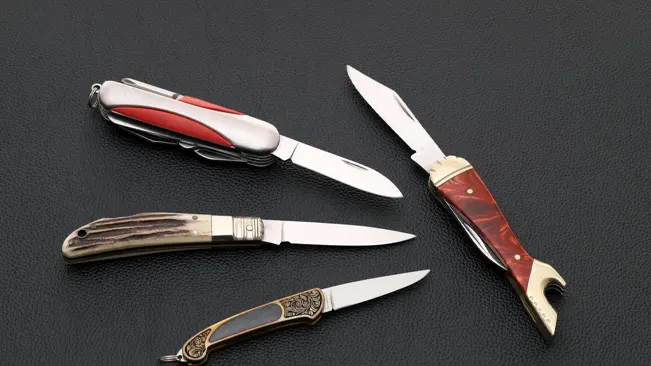
Even so, you can’t just toss them in your bag. You need to wrap these knives carefully or put them in a secure case. This is to make sure they don’t accidentally hurt someone or damage something in your luggage or the airplane. Remember, these rules are there to keep everyone’s journey safe and smooth, so it’s really important to follow them closely.
Tips for Travelers:
- Check TSA Guidelines: Before packing for a flight, it’s crucial to review the latest guidelines provided by the TSA. This will help ensure that you are aware of the specific rules regarding pocket knives and other sharp objects.
- Use Secure Packaging: If you need to transport a permitted pocket knife in your checked baggage, make sure to securely wrap and pack it to prevent any accidental injuries to baggage handlers or security personnel.
- Consider Alternative Options: If possible, consider leaving your pocket knife at home to avoid any potential issues with security checkpoints. Alternatively, you can choose to purchase a knife at your destination if it is necessary for your trip.
International Travel Regulations
When planning an international journey, it’s crucial to understand that the rules about carrying pocket knives on airplanes can differ greatly from one country to another. Every nation has its own set of security measures and restrictions, especially when it comes to items that could be seen as risky, like knives. Before you pack your bags, take some time to look up the guidelines for each country you’ll be visiting or passing through. This includes understanding their policies for both carry-on and checked luggage.

The rules might be much tighter compared to what you’re used to. Certain countries might not allow you to bring any kind of knife in your checked baggage, not just your carry-on. Others might have specific rules about the size or type of knife you can bring. Not knowing these rules can lead to unpleasant situations like having your items taken away, paying fines, or even facing legal problems in severe cases.
To make your travel smooth and hassle-free, it’s a good idea to do this homework well in advance. You can usually find this information on the official websites of the country’s airport or national security agencies. If the information isn’t clear or you have doubts, consider reaching out to the airline you’re flying with, the airport authorities, or even the embassy or consulate of the country you’re visiting. They can give you the most accurate and up-to-date advice. Remember, being well-informed and prepared is the best way to ensure a smooth and enjoyable journey.
Safety Considerations
When you’re getting ready to fly, keeping everyone safe should be your top priority. This means you need to be careful about what you pack, especially when it comes to things like knives. The TSA and other groups that look after airplane safety have made rules about what you can bring. These rules are there to make sure everyone on the plane is safe.

Always remember that even small things like pocket knives can be seen as dangerous on a plane. This is why there are strict rules about them. When you’re packing, think about these rules and follow them closely. This isn’t just about following the law; it’s about making sure that you and everyone else on the plane can have a worry-free trip.
If you’re ever unsure about what you can bring, it’s much better to leave it out of your bag or check the rules again. Most times, you can find these rules on the TSA’s website or you can ask the airline you’re flying with. By taking these extra steps to pack safely, you’re doing your part to keep the skies friendly and safe for everyone.
Conclusion
In conclusion, the TSA prohibits the carrying of most pocket knives in carry-on luggage but allows certain types of knives to be transported in checked baggage. However, travelers should always verify the regulations specific to their travel route and exercise caution when packing sharp objects. By staying informed and compliant with relevant guidelines, passengers can help maintain a secure and efficient air travel environment.
Frequently Asked Questions (FAQs)
1. Can I bring a pocket knife in my carry-on luggage when flying?
Answer: No, pocket knives are generally not allowed in carry-on luggage when flying. The Transportation Security Administration (TSA) prohibits most types of knives in the passenger cabin of an aircraft.
2. Are there any exceptions for carrying pocket knives on a plane?
Answer: Yes, the TSA allows certain types of knives to be transported in checked baggage. Non-locking pocket knives with blades that are 2.36 inches or less in length are permitted in checked luggage.
3. Can I bring a Swiss Army knife in my carry-on bag?
Answer: Swiss Army knives with blades that lock into place are generally not allowed in carry-on luggage. However, non-locking blades that meet the length requirement can be packed in checked baggage.
4. What should I do if I accidentally bring a pocket knife in my carry-on bag to the airport?
Answer: If you inadvertently bring a pocket knife in your carry-on bag, inform the security personnel at the airport. They can provide guidance on how to properly handle the situation.
5. Are there specific rules for international travel regarding pocket knives on airplanes?
Answer: Yes, regulations regarding pocket knives on airplanes may vary by country. It’s important to familiarize yourself with the specific rules and guidelines of the countries you are traveling to and from.
6. Can I pack a pocket knife in my checked baggage for an international flight?
Answer: If the country of your destination permits the transportation of pocket knives, you can pack a permitted knife in your checked baggage. However, it’s essential to research and comply with the regulations of the destination country.
7. What are the consequences of attempting to bring a prohibited pocket knife on a plane?
Answer: Attempting to bring a prohibited pocket knife on a plane can result in confiscation of the item, potential fines, and delays at the airport security checkpoint.
8. Can I transport a collectible or antique pocket knife on a plane?
Answer: Collectible or antique pocket knives may be subject to specific regulations. It’s advisable to check with the TSA or relevant authorities to determine the proper procedures for transporting such items.
9. Are there any alternatives to bringing a pocket knife on a plane?
Answer: If possible, consider leaving your pocket knife at home to avoid potential issues with security checkpoints. Alternatively, you can choose to purchase a knife at your destination if it is necessary for your trip.
10. What should I do if I have a legitimate need to transport a pocket knife on a plane?
Answer: If you have a legitimate need to transport a pocket knife, such as for work or specific activities at your destination, research the regulations and guidelines of the TSA and the destination country. Properly pack the knife in accordance with the rules for checked baggage and be prepared to communicate with security personnel if needed.

Arthur Grant
With a profound expertise in all kinds of knives and a specialized focus on knife sharpening, I've established myself as a leading figure in the knife community. My journey began with a keen interest in the multifaceted world of knives, spanning from culinary masterpieces to tactical tools. This passion led me to explore and master the art and science of knife sharpening, blending age-old techniques with cutting-edge methods to ensure optimal performance of every blade. My commitment to sharing this wealth of knowledge led to the creation of a dedicated blog, where I engage with a community of knife enthusiasts. Through this platform, I offer a wealth of resources including detailed reviews, insightful tutorials, and the latest in knife trends and innovations. My aim is to educate and inspire, providing valuable information on the proper care, maintenance, and usage of knives, catering to both professionals and hobbyists alike.

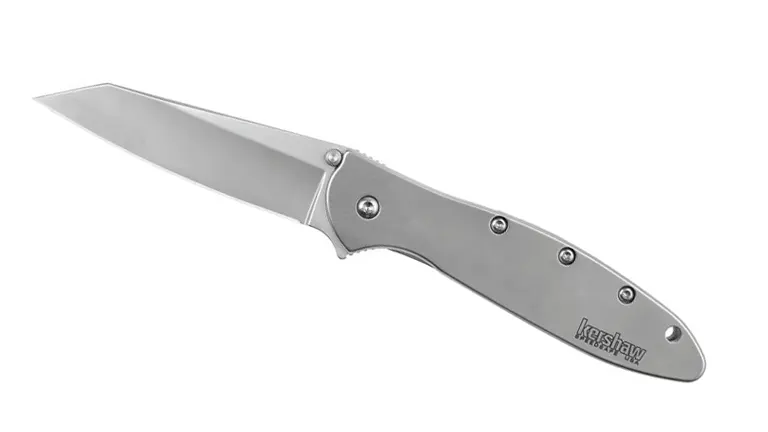

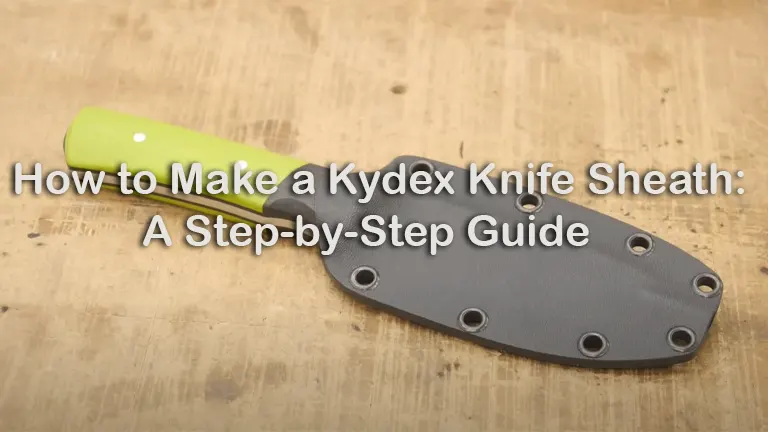
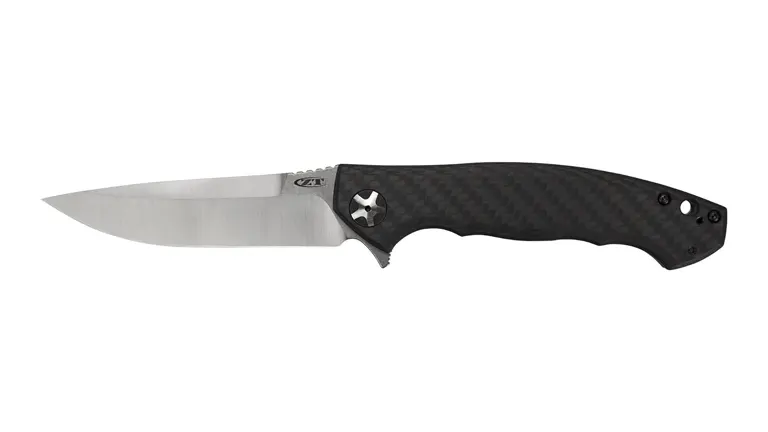



Leave your comment